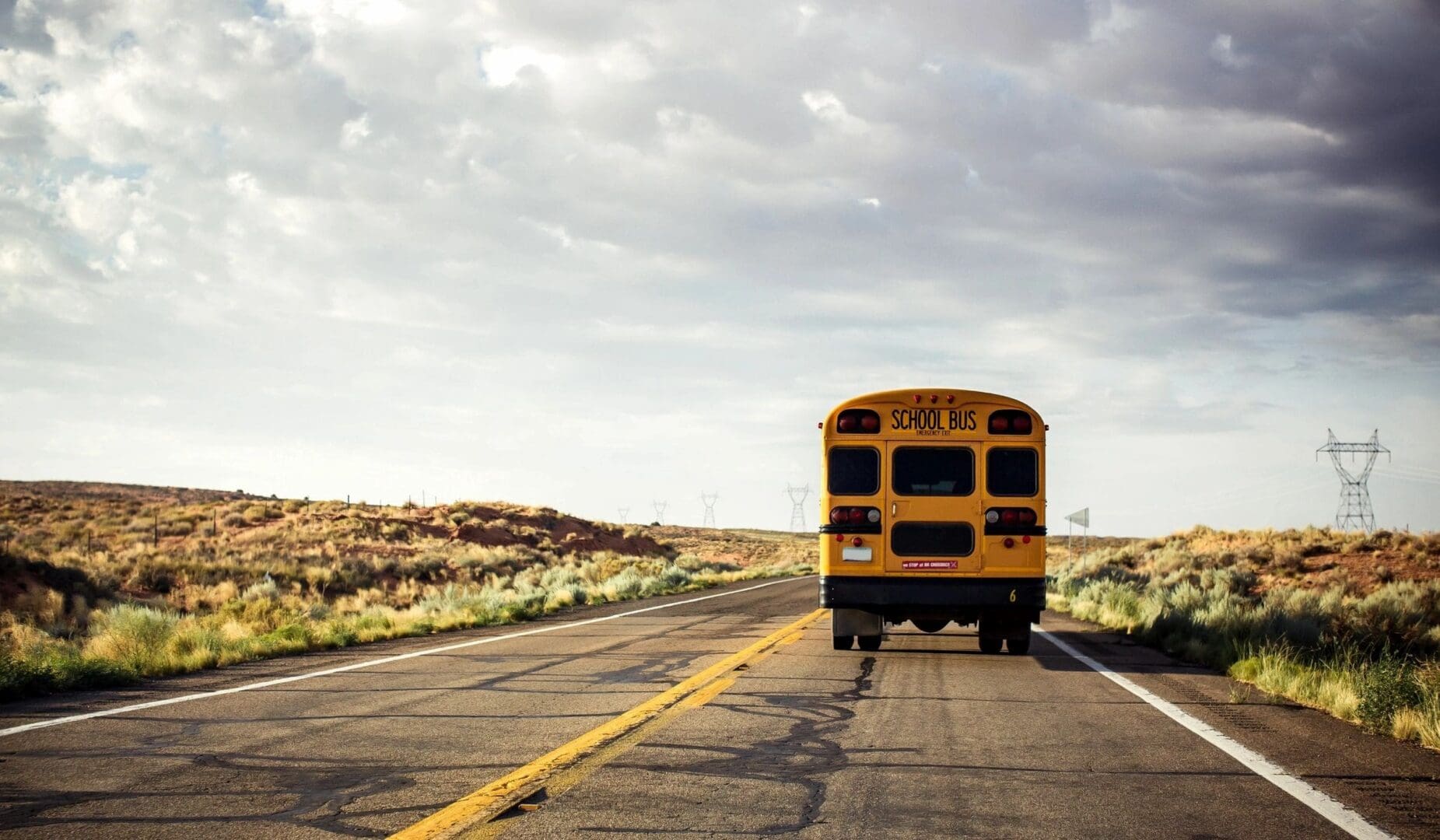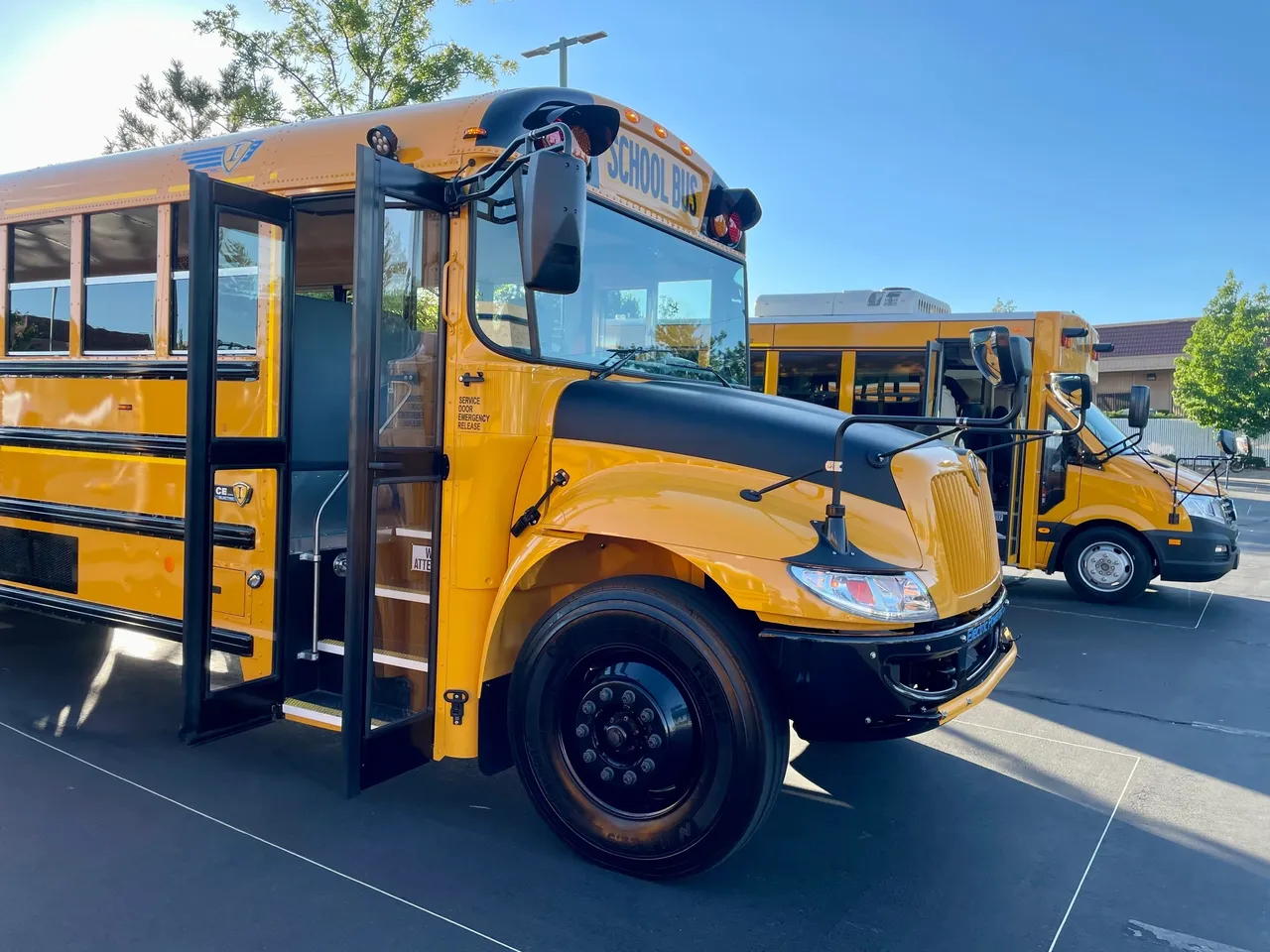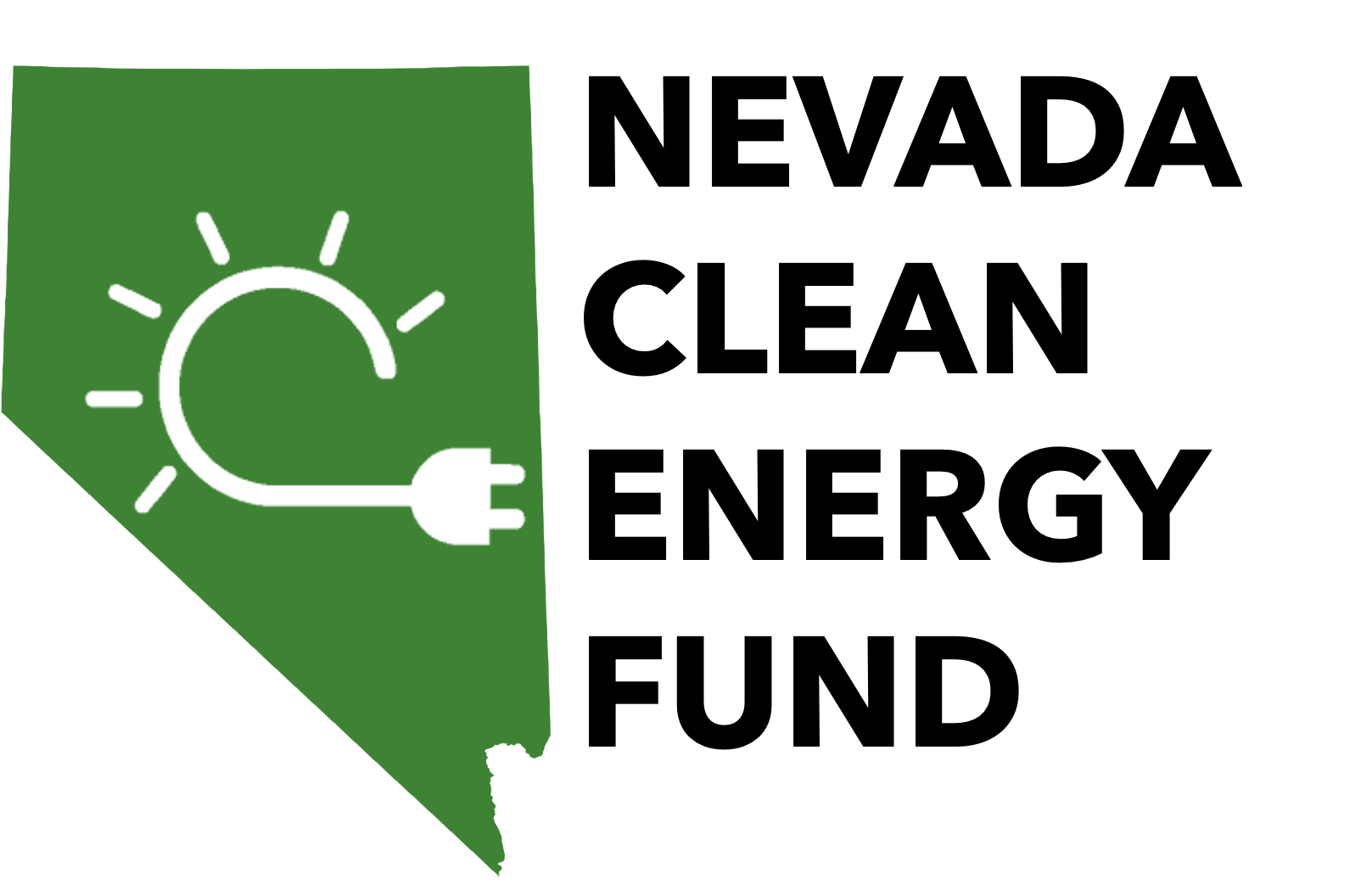
Electric School Bus Program
The Nevada Clean Energy Fund (NCEF) works with school districts across the state to deploy electric school buses. Electric school buses can save schools money on bus maintenance and fuel costs, make the air our children breathe healthier, and are quieter, accelerate faster, and perform better on inclines than their diesel and propane counterparts. Several electric bus funding opportunities are available to school districts, including from the US Environmental Protection Agency, the Inflation Reduction Act, the US Department of Agriculture, NV Energy, the Nevada Division of Environmental Protection, and NCEF.
NCEF was awarded a $7.7 million EPA grant to help school districts across the state deploy electric school buses. NCEF also provides free technical support to help school districts apply for funding, weigh the costs and benefits of different electric school buses and charging options, gather intel from bus OEMs and other product and service providers, and develop implementation plans. Reach out to us to learn more, and scroll down to get the latest intel on current offerings from OEMs and charger providers, range considerations, and lessons learned from other school districts that have electrified.
A Testament to Safety and Sustainability
"I have been in the school bus industry for almost 25 years and have never been as impressed with any bus. My students feel extremely safe and are proud to be on a bus that doesn't pollute. I feel very safe driving a CDL vehicle that handles adverse weather with icy and snow-packed roads so securely."
Transportation Director, West Grand School District, CO

Disclaimer and Disclosure
The below intel is provided for informational purposes only and is not intended to serve as investment advice. Actual results and bus performances will differ. Mention of third-party entities or vendors does not indicate an endorsement by the Nevada Clean Energy Fund.
Frequently Asked Questions
The information below is based on intel from bus OEMs and lessons learned from other school districts that have electrified. Reach out to us at [email protected] for more information and to take advantage of our free technical support.
Today, the upfront cost of an electric school bus is 2-4x its diesel counterparts, but can yield significant (60-90%) fuel and maintenance cost savings throughout the life of the bus. Electric school bus costs are expected to reach parity with diesel bus costs as bus OEMs scale manufacturing and lithium-ion battery prices continue to decline. In the meantime, government incentives are available that can make electric school buses significantly more cost-effective than diesel buses. This is in addition to the significant health and performance benefits of electric buses.
The Nevada Clean Energy Fund developed a Total Cost of Ownership tool to help school districts weigh the costs and benefits of different electric bus options relative to diesel or propane alternatives and take into account factors like fuel and electricity costs, charging infrastructure upgrades, and available rebates. Reach out to us to use this free tool.
School buses also have the potential to generate an additional revenue stream for schools by providing services to the grid when the bus is not operating, for example, during the summer months. This is known as vehicle-to-grid (V2G). Doing so is not a requirement of getting an electric school bus, and would require the school to work closely with its local utility.
There are several sources of funding available for electric school buses, including through the US EPA, federal tax credits, USDA grants, and local utilities.
The US EPA Clean School Bus Program has $5 billion in federal funding for clean school buses over the next five years (FY22-26). The FY23 rebate application is due January 31, 2024, and provides up to $345,000 per electric school bus and associated charging infrastructure. The US EPA will notify applicants if they are selected in April 2024, only after which selectors should make a purchase order with their preferred bus and charger provider. Selectors must submit the purchase order(s) with a completed online Payment Request Form to the EPA by October 2024. The EPA anticipates disbursing funds within ~60 days of the submission of a completed payment request form. Rebate recipients must take an order for the electric bus and scrap the replacement bus by April 2026.
Electric school buses are also eligible for federal tax credits that could be accessed via direct pay by non-taxable entities. The Qualified Commercial Clean Vehicle Tax Credit covers the lesser of up to 30% of the cost of the vehicle or up to $40,000. The Alternative Fuel Refueling Property Credit also covers the lesser of up to 30% of the costs of the charging infrastructure, or up to $100,000.
NV Energy also has incentives for electric buses or charging infrastructure that are now available to all school districts located in their service territory.
Electric school buses and charging infrastructure in rural areas may also qualify for grants under USDA's Community Facilities and Rural Energy for America Program.
The Nevada Clean Energy Fund can help school districts identify and apply for funding and can provide low-interest financing to cover costs not covered by grants, rebates, or tax credits.
ThomasBuilt, Blue Bird, Lion Electric, IC Bus, BYD, GreenPower, Lightning eMotors, Motiv, Motorcars, Phoenix, and Endera all have electric buses on the market. Base prices for electric school buses currently run from $240k to $440k, depending on size and range, and can increase with additional advanced features. The World Resources Institute's Electric School Bus US Market Study and Buyer's Guide provides information on offerings from OEMs, including size, general pricing, and ranges; the Nevada Clean Energy Fund also provides intel and considerations on range, battery life, and charging infrastructure below based on our conversations with OEMs and other school districts that have electrified.
Key factors to consider when choosing which routes to use an electric bus on include the advertised range of the bus you purchase, the distance of the route, the incline on the route, the anticipated use of the interior heater during winter months, the time between rides for the bus battery to recharge, and the speed of the charger installed. The advertised range of a bus is influenced primarily by the battery capacity, as well as battery chemistry and bus weight. Advertised ranges for current electric school buses on the market are from 75 miles to up to 210 miles on a single charge, with higher ranges typically equating to greater bus cost. In practice, the actual range of a bus will be lowered, influenced by factors such as (1) use of the bus interior heating, (2) inclines, and (3) battery degradation over time. Over the past several years, we have seen school districts comfortably electrify 80 to 100-mile routes with buses that have advertised ranges of 120–150 miles.
- Interior heating: The use of the interior heater can reduce the bus range by ~10% because the heater is powered by the bus battery. Schools can add an auxiliary, fossil fuel-powered heater to their bus, but OEMs typically only recommend this for areas that experience extreme cold temperatures (e.g., northernmost US and Canada). The use of interior air conditioning can also reduce range, but not as significantly as the heater.
- Inclines: Although electric buses have excellent torque and performance on inclines, hills, and mountainous terrain can reduce the range of the bus. The use of regenerative braking can minimize this range loss and also reduce wear and tear on bus breaks. Reach out to us to understand the effects of inclines on your routes on the range.
- Battery Degradation: Battery capacity, and as a result, bus range, can degrade over time, and we hear that battery degradation for electric school buses in operation has been on the order of 1% to 2% per year. To minimize degradation, schools should avoid deep discharges of the battery (i.e., below 10%-20% of battery capacity) and avoid keeping the bus charged at 100% for extended periods of time (e.g., limit battery charge to 90% when the buses are not being used in the summers). Exposing the battery to extreme heat can also cause degradation, but battery management systems that run on a 12-volt battery are a standard offering for electric school buses designed to keep the battery at healthy temperatures.
- Extreme temperatures: Exposing the battery to extreme heat can be unhealthy for the battery, but battery thermal management systems that run off of a 12-volt battery are a standard offering for electric school buses designed to keep the battery at healthy temperatures.
Chargers and charger costs vary based on power output (kilowatts, kW) and speed of charging (Level 2 or Level 3 DC fast chargers).
- Level 2 chargers with 7kW to 20kW of capacity could recharge a bus battery in 5.5 to 13 hours and typically cost between $400 and $6,500.
- Level 3 DC fast chargers with 24-150 kW of capacity could recharge a battery in 1 to 4.5 hours and typically cost between $10,000 and $40,000.
A greater kW charger could increase electric utility costs, depending on the school's demand charge rate structure. Because of this, some schools invest in software that allows for managed charging based on electricity rates or utility signals.
In addition to the cost of the charger, installation costs will vary depending on the electrical panel capacity at the bus yard. Utility grid upgrades may also be required depending on local substation capacity. The EPA Clean School Bus Program's FY22 rebate provides a $13k-$20k rebate for the charging infrastructure, and there are other potential sources of funding from the USDA and the Nevada Clean Energy Fund.
A school might opt for a more expensive Level 3 DC fast charger if the bus needs to recharge in between rides in order to have sufficient range to complete its afternoon route and/or if the bus battery is providing grid services (V2G). Level 3 DC fast chargers are generally more complex and, as a result, could be more prone to issues if not managed correctly. They require reliable cell service or Wi-Fi to operate.
Buses on the market can work with multiple types of chargers; however, bus OEMs often make charger provider recommendations and sometimes manufacture their own chargers. Chargers on the market include but are not limited to, ABB, ChargePoint, Clipper Creek, Electrify America, InCharge Energy, Nuvve, Proterra, Rhombus, and Tritium.
Battery capacity, and as a result, bus range, can degrade over time. So, barring any unexpected battery events, the life of the battery is tied to its degradation rate. We hear that battery degradation for electric school buses in operation has been on the order of 1% to 2% per year. To minimize degradation, schools should avoid deep discharges of the battery (i.e., below 10%-20% of battery capacity) and avoid keeping the bus charged at 100% for extended periods of time (e.g., limit battery charge to 90% when the buses are not being used in the summers). Exposing the battery to extreme heat can also cause degradation, but battery thermal management systems that run off of a 12-volt battery are a standard offering for electric school buses designed to keep the battery at healthy temperatures.
Bus OEMs provide battery warranties based on years, miles driven, and/or kWh discharged. Often, these warranties are for a certain amount of battery capacity (e.g., 60-80% at the end of 8 years). In some instances, schools can purchase additional warranties. Standard battery warranties range from 5 to 15 years, depending on the OEM. Reach out to us for more information and OEM warranty templates.
The bus battery contains valuable metals, namely lithium, cobalt, and nickel. Because of this, the lithium-ion battery industry is growing its battery recycling operations and increasingly looking to spent batteries as an alternative to mining in order to source metals for manufacturing new batteries. In North America, third-party battery recyclers include Redwood Materials (headquartered in Carson City, NV) and Li-Cycle.
We have consistently heard four recommendations from other school districts that have electrified: (1) engage your utility early, (2) invest in driver training, (3) plan for the future, and (4) engage and educate students.
(1) Engage your utility early: Schools should work with their utility to, first and foremost, understand any grid upgrade costs of different charger options. Installing a charger may require grid infrastructure upgrades on the utility side, for example, at the local utility substation. If grid upgrades need to be made and the utility is unable to cover those costs, there are other potential sources of funding, for example, from the USDA and the Nevada Clean Energy Fund. It is important to start this process early because if grid upgrades are needed, transformer and switchgear orders can have a long lead time. It is also important to work with your utility to identify the optimal electricity rate structure based on charging needs and explore the use of the bus for grid services.
(2) Invest in driver training: Getting drivers involved early on in the process is important for both buy-in and training. We hear from other school districts that drivers are often hesitant to drive an electric bus and have concerns, but that this changes once they undergo training and get behind the wheel. Drivers, in particular, need training on the regenerative braking features of electric buses. Some school districts have involved their senior drivers in the development of the training manual in collaboration with the OEMs and dealers.
(3) Plan for the future: Think about what bus electrification might look like for your school beyond the EPA Clean School Bus Program deadlines and plan ahead, one year, two years, or even five years. For example, if you are upgrading your bus yard and laying conduit for your chargers, put in stubs for additional chargers that you might need in future years so that you only have to cut into your parking lot once.
(4) Engage and educate students: Almost every school district that has an electric bus has used it as a learning opportunity for students. Students typically feel a sense of pride to be on a zero-emissions bus and are eager to learn more. Schools and transportation staff work with organizations that focus on STEM and sustainability curricula, such as Envirolution here in Nevada, to develop materials and media related to electric buses.
For more resources on electric school buses, visit the Department of Energy's Alternative Fuels Data Center and reach out to us.
